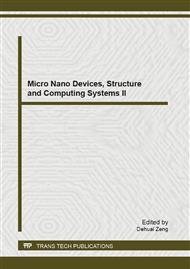p.183
p.188
p.192
p.197
p.201
p.207
p.211
p.219
p.225
The Effect on a New Sintered Calcium Sulfate Ceramic to Osteoprogenitor MC 3T3-E1
Abstract:
Among the bone graft biomaterials, calcium sulfate (CS) is a kind of resorbable calcium salt which is the earliest inorganic material used as a bone graft. Although it is well biocompatible, the dissolution rate is always too fast which cannot stay long enough to support bone regeneration effectively. Recently, a new type ceramic CS developed by AG Digital Co. LTD. has the far better improvement in dissolving rate and strength. The purpose of this study was to testify its performance on osteoprogenitor to ascertain the safety and effect of this new material. In our research, the secreted extracellular matrix protein and calcium mineralization showed different affections: the collagen concentration on ceramic CS was higher than on pure CS dihydrate in both 7 days and 14 day’s samples. The alkaline phosphatase (ALP) activity and calcium concentration remained identical before 7 days cultivation, but the activity of ALP and calcium sediment in ceramic CS were statistically higher than in pure CS dihydrate in 14 day’s cultivation. The results implied that the new material, ceramic CS, tend to accelerate the preosteoblast’s secretion of extracellular matrix protein. We found in this study by comparing the well-known CS dihydrate that the new ceramic CS shows benefit to osteoprogenitor cultivation.
Info:
Periodical:
Pages:
201-206
Citation:
Online since:
March 2013
Keywords:
Price:
Сopyright:
© 2013 Trans Tech Publications Ltd. All Rights Reserved
Share:
Citation:


